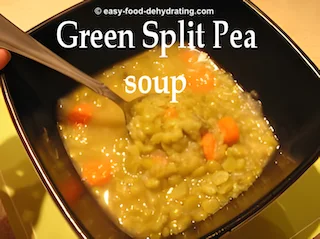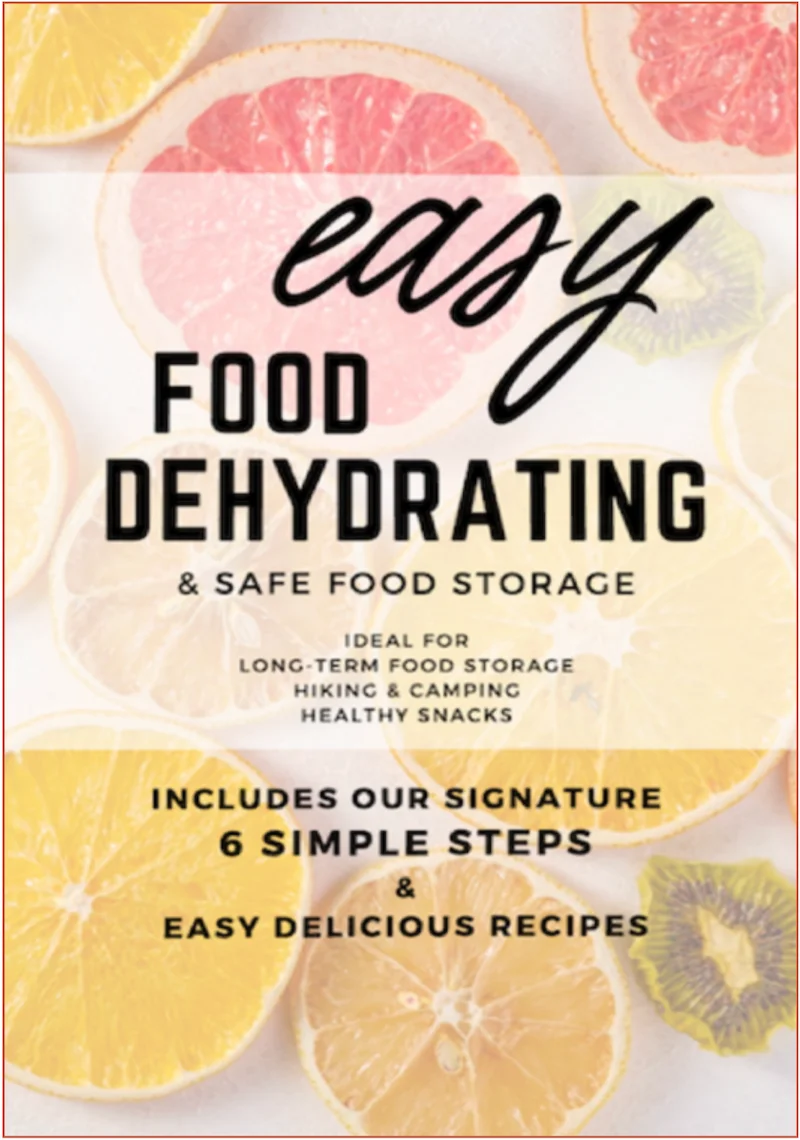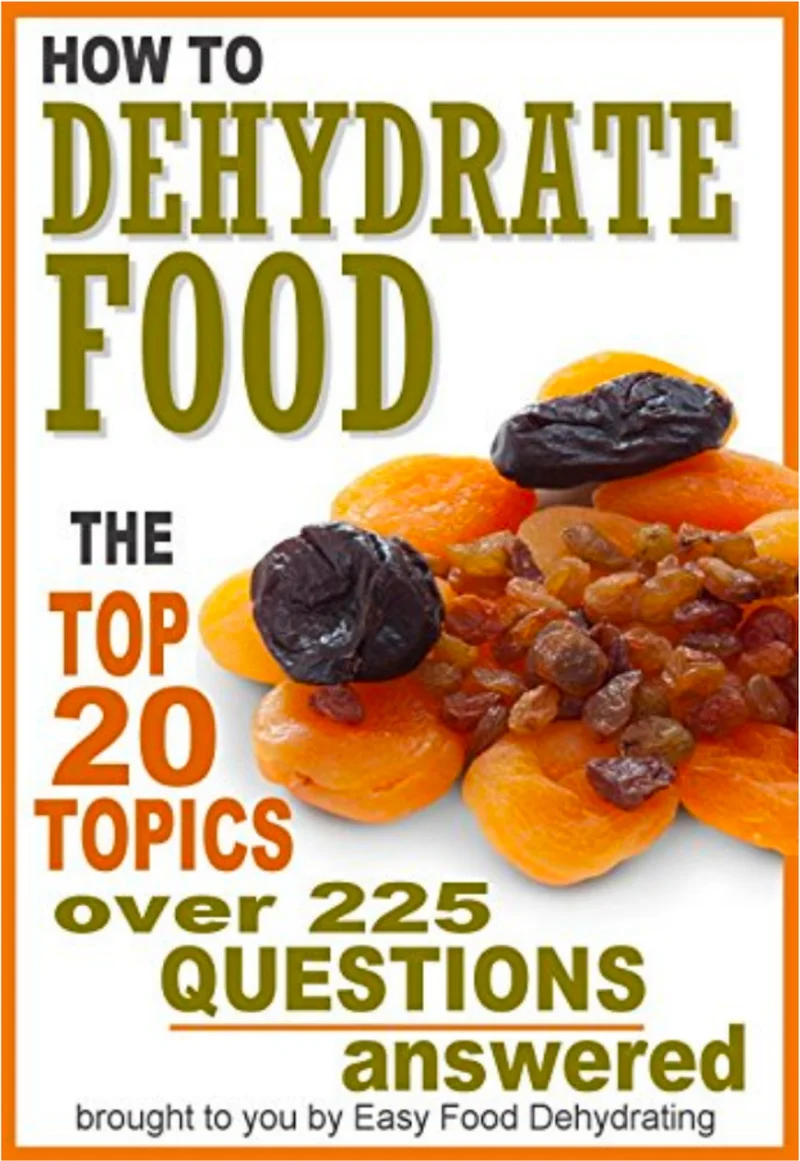What We Mean by “Dehydrate”
Here at Easy Food Dehydrating, “dehydrate” always means using an electric food dehydrator — the easy, reliable way to dry food at home.
- Home
- Easy Dehydrated Food Recipes
- Quick Soup Mixes
Quick Soup Mixes: Easy, Flavorful
& Ready in Minutes!

If you’re short on time but still crave a warm, nourishing meal, quick soup mixes are your new best friend. By combining dehydrated vegetables, lentils, and spices ahead of time, you can have a hearty, wholesome soup ready faster than it takes to order takeout.
✅ Quick Answer: What are quick soup mixes?
Quick soup mixes are dehydrated vegetables, legumes, and spices stored in ready-to-use portions. Just add water, simmer, and you’ve got a healthy, homemade meal in minutes—without the chopping or hassle.
These mixes are not only convenient but also packed with nutrition, making them perfect for busy families, meal preppers, and anyone who loves homemade comfort food—without the extra work.

Did you know that dehydrated vegetables keep most of their nutritional value? It's due to "concentration." When we dehydrate vegetables the water is removed, which makes the nutrients more concentrated by weight. Here's how it breaks down for carrots:
100g of fresh carrots contains about 7% of your daily Vitamin A needs.
100g of dehydrated carrots would be equivalent to roughly 1000g of fresh carrots, as carrots are about 90% water!
This is why 100g of dehydrated carrots appear to provide much more Vitamin A - it's actually the equivalent of 10 times more carrots! So, a serving of dehydrated carrots (about 10g) would provide similar nutrition to 100g of fresh carrots.
The real benefits of dehydrated vegetables lie in their long shelf life, convenience, and the ability to store large amounts of nutrients in small spaces such as Mason jars.
Why Quick Soup Mixes Save Time & Money
One of the great things about soup with dehydrated vegetables is that dried veggies are just like fresh veggies, as pretty much all their nutrients remain after dehydration.
To get the soup party started, simply rehydrate the mixes in clean drinking water, bring to a boil, simmer - and enjoy.
What Makes Quick Soup Mixes So Healthy & Convenient?
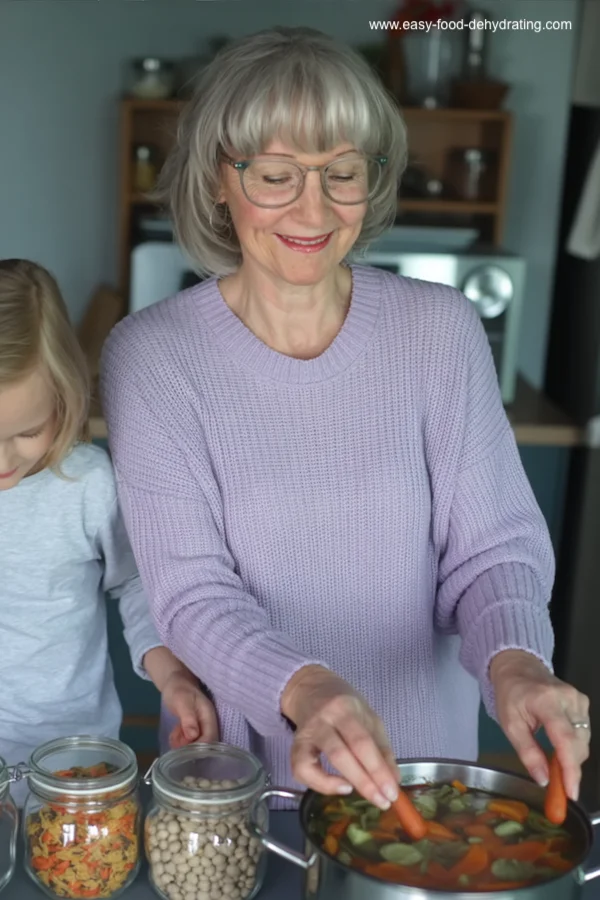
What I like most about these homemade dried soups is how fast you can turn them into bowls of wholesome soup.
No need to mess around with veggie prep, you will have already done that step before dehydrating.
Kids love these soups, too - any time of the year. Skip the drive-thru trip.
Let's Stock That Pantry with Quick Soup Mixes!
Here's what you need to create your own soup magic:
Veggie Power
Mix and match these dried goodies:
- Carrots (for super eyesight!)
- Onions (flavor)
- Celery (crunch factor)
- Bell peppers (Vitamin C)
- Tomatoes (Antioxidants)
Check out their links above to learn how to dehydrate these perfect-for-soup tasty vegetables.
And check out my carrot soup recipe, too.
DIY Dehydration 101
Ready to become a dehydration pro? Here's a quick guide:
- Wash and slice vegetables thinly for even drying.
- Blanch if needed (great for carrots and broccoli to retain color and create helpful cracks in their skins!)
- Arrange on dehydrator trays, and make sure pieces don't touch.
- Set temperature between 125°F-135°F.
- Dry for 6-12 hours, depending on the vegetable and your dehydrator.
- Store in airtight containers such as Mason jars or food vacuum-sealer bags once completely cool.
💡 Tip: Outside the U.S.? Most dehydrating temps here are listed in Fahrenheit - use our quick converter to see the Celsius equivalent for your machine.
A food dehydrator is my chosen method of drying veggies, but you can also use your oven on its lowest setting.
Use the handle of a wooden spoon to keep the oven door open a tad to help with air circulation.
Lentils and Beans Add a Protein Punch
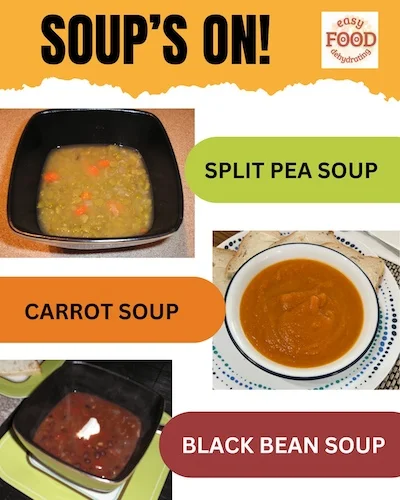
Here are recipe links for lentil soup, split pea soup, and black bean soup.
Don't forget these filling fibrous foods, and they're inexpensive, too:
- Red lentils (they cook super fast!)
- Other legumes (split peas, beans)
Flavor Fiesta: Spice Up Your Soup Mix!
Spice up your dehydrated soup mix with:
- Dried herbs (thyme, oregano, basil – get our free "How to Grow & Dehydrate Herbs" eBook)
- Low-sodium veggie bouillon (flavor without the salt overload - read our Better Than Bouillon page)
- Spices like turmeric or cumin (turmeric adds a pleasant orange color, and cumin has a distinctive earthy, nutty, and slightly smoky flavor, used in hummus recipes)
Make These Quick Soup Mixes Today!
Coming up are three recipes, plus tips on making your own Soup Kits!
The "I've Got 20 Minutes" Red Lentil Soup Recipe
Use red lentils because they tend to break down faster than other lentils, and you don't need to pre-soak them!
If you have brown lentils on hand, consider using them in our lentil soup and use a slow cooker for fantabulous results!
- Place 1 cup dried red lentils and 1/2 cup mixed dried veggies in a pot
- Add some garlic powder, cumin, and a pinch of turmeric
- Pour in 4 cups of water
- Boil, then simmer for 15-20 minutes
- Blend it if you want it smooth (or leave it chunky for the rebels!)
The "Whatever's in the Pantry" Veggie Soup Recipe
This is so much fun to make. Choose whatever takes your fancy from your stock of dried veggies, use a cup of each, and see what creative combos you can come up with. Share your recipe with us (directly below).
- Grab a cup of any dried veggies you have
- Add some tomato powder for a rich red color
- Toss in your favorite dried herbs (basil, oregano, thyme, rosemary, marjoram - and smoked paprika for a nice smoky flavor)
- Add a spoon of veggie bouillon such as the Better Than Bouillon brand for extra yummy depth
- 4 cups of water and you're good to go!
- Bring to a boil and simmer for 10-15 minutes and voila!
Thai-Inspired Coconut Curry Soup Recipe
Let's take your taste buds on a trip!
- Mix 1/2 cup each of dehydrated carrots, bell peppers, and onions
- Add 1/4 cup dried mushrooms and 2 tbsp dried lemongrass
- Toss in 2 tbsp curry powder and 1 tsp dried ginger, mix well
- Add 3 cups of water and 1 can of coconut milk, mix well
- Simmer the soup for 15-20 minutes, then add a handful of cooked rice noodles
- Finish with a squeeze of lime and fresh cilantro
PLEASE NOTE: I haven't provided the Nutritional Facts for the above soup recipes because the amounts you use and items you use WILL vary! Thanks.
DIY Quick Soup Kits: Mix, Store & Save
Be your own five-step soup fairy.
It doesn't matter what time of day, or whether the weather is hot, cold, or somewhere in between - a bowl of soup is soul-satisfying - and easy to make!
- Mix your favorite dried veggies, lentils, and spices
- Pop them in a Mason jar or food-vacuum sealer bag
- Label it with what's inside and when you made it
- Add an oxygen absorber, and then vacuum seal
- Add a little note: "Just add water and love!" and a reminder to remove the oxygen absorber!
DIY Quick Soup Kits: Mix, Store & Save
If you’ve ever seen those trendy instant jar soups online, you’ll be glad to know that your quick soup mixes work the same way—just healthier and more customizable. By layering dehydrated veggies, lentils, and spices in jars, you’ve basically created your own DIY soup kits.
These are fantastic for grab-and-go lunches, thoughtful gifts, or simply making weeknight dinners a breeze.
How to Store Quick Soup Mixes for Freshness
Set aside a day where you can dehydrate a bunch of vegetables. When they're dry, do this:
- Store in airtight containers (Mason jars, food vacuum sealer bags, FoodSaver reusable bags)
- Keep in a cool, dark place (pantry, or in a kitchen cupboard, away from direct light)
- Use those older mixes first (rotation is key!)
Shelf-Life Secrets to Quick Soup Mixes
Properly stored dehydrated vegetables can last 5-10 years! Here's the scoop on storage times:
- Dehydrated vegetables: 5-10 years
- Dried beans and lentils: 10-30 years
- Dried herbs and spices: 1-3 years
- Complete soup mixes: 1-2 years (due to the spices)
Remember, these are estimates. Always check for signs of spoilage before use!
How to Make Soup with Dehydrated Veggies in 4 Steps
Ah, the aroma of soup just can't be beat - and the simplicity of soup is what I love the most. Here are the four quick soup mixes steps.
(That reminds me, I have a video of me using a SupMaKin kitchen veggie slicer, and I get carrots all over the place, so it's worth a laugh, er, look!)
- Add your chosen veggie mix to a (tallish) saucepan
- Add water (about 6 cups - but feel free to add more if needed if the soup is too thick)
- Boil, then simmer until everything's soft and happy
- Taste and add more spices if needed
Pro Tip: Use Better Than Bouillon by Superior Touch for flavorful soups.
Add some fresh spinach or a dollop of yogurt to top it off.
Rehydrating Dried Veggies for Use in Soup
Different veggies need different amounts of water and time to rehydrate. Here's a quick guide:
- Carrots, onions, celery: 1 cup dried to 2 cups water, 20-30 minutes
- Bell peppers, tomatoes: 1 cup dried to 1.5 cups water, 15-20 minutes
- Potatoes: 1 cup dried to 2.5 cups water, 30-40 minutes
Pro Tip: You can rehydrate veggies directly in your soup as it cooks. Just add a cup or so more liquid than the recipe calls for. And by liquid, I mean either water or stock.
Quick Soup Mixes for Busy Days
Nothing beats a bowl of soup when you're short on time; just butter a couple of slices of bread! I love my Green Split Pea Soup!
- Meatless Monday? Lentil soup to the rescue!
- Need a quick lunch? Soup wins out!
- Trying to sneak more veggies into the kids? Blend that soup smooth with an immersion blender (aka stick blender).
Benefits of Quick Soup Mixes
- It's super healthy
- It's faster than ordering pizza (and cheaper too!)
- Less processed junk = a happier, healthier family
Save Money with Quick Soup Mixes
Making soup with dehydrated veggies can save you money. Here's a quick comparison:
- Fresh veggie soup (4 servings): $8-$10
- Frozen veggie soup (4 servings): $6-$8
- Dehydrated veggie soup (4 servings): $3-$5
Now then, you may be asking yourself, "Why are dehydrated veggies cheaper, overall?" Produce is always cheaper when it's in season - because it's plentiful.
So dehydrate veggies (and fruit!) when it's in season. Store it, and save money by using your stash when they're not in season.
Frequently Asked Questions About Soup Mixes
My vegetables are still crunchy after cooking. What went wrong?
My vegetables are still crunchy after cooking. What went wrong?
They probably need a bit more time to rehydrate. Try soaking them in hot water for 10-15 minutes next time, before adding to your soup.
My soup tastes bland. Help!
My soup tastes bland. Help!
Dehydrated veggies sometimes need a flavor boost. Try adding a splash of vinegar or lemon juice to brighten the flavors. And don't forget to use flavorful stock from Better Than Bouillon!
Can I use dehydrated vegetables in other dishes?
Can I use dehydrated vegetables in other dishes?
Yes, you can use them in casseroles, stir-fries, or even as a crunchy topping for salads.
Quick soup mixes are a lifesaver for busy days, unexpected guests, or those moments when you just don’t feel like cooking from scratch. With dehydrated veggies and simple seasonings on hand, you can turn “what’s for dinner?” into a fast, healthy meal in minutes.
Ready to explore more simple, flavorful ideas? Don’t forget to grab your free copy of 5 Dried Food Recipes That Actually Taste Great (below)—a perfect companion to your soup-making adventures!
Get 5 Dried Food Recipes You'll Actually Love
Here's where you can get your copy of our all new
5 Dried Food Recipes (That Actually Taste Great)
They're my all-time favorite easy dried food meals!
Get it here right now.
For Free!
Before You Go...
If you enjoyed this page, tap the ❤️ in the lower right-hand corner.
It saves this page to your Grow bookmarks so you can find it again later.
You’ll also see quick share buttons to copy the link, post to Facebook,
or save it straight to Pinterest.
